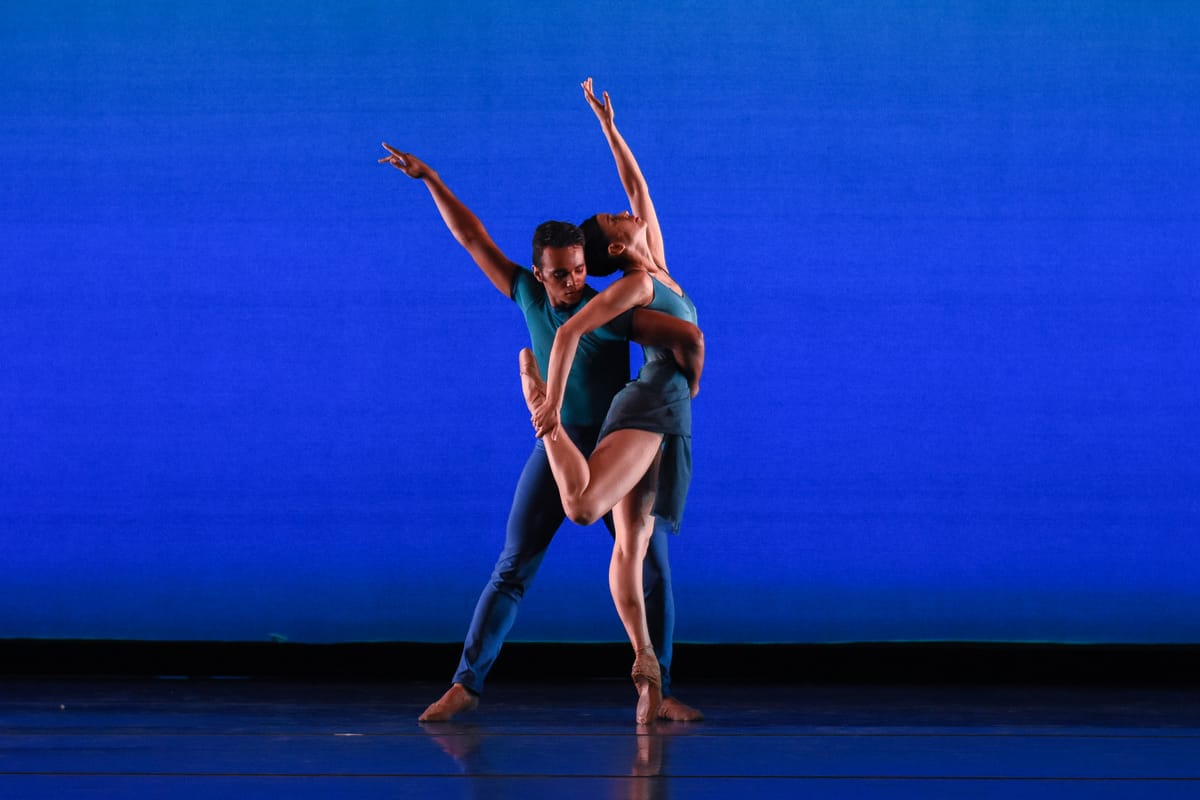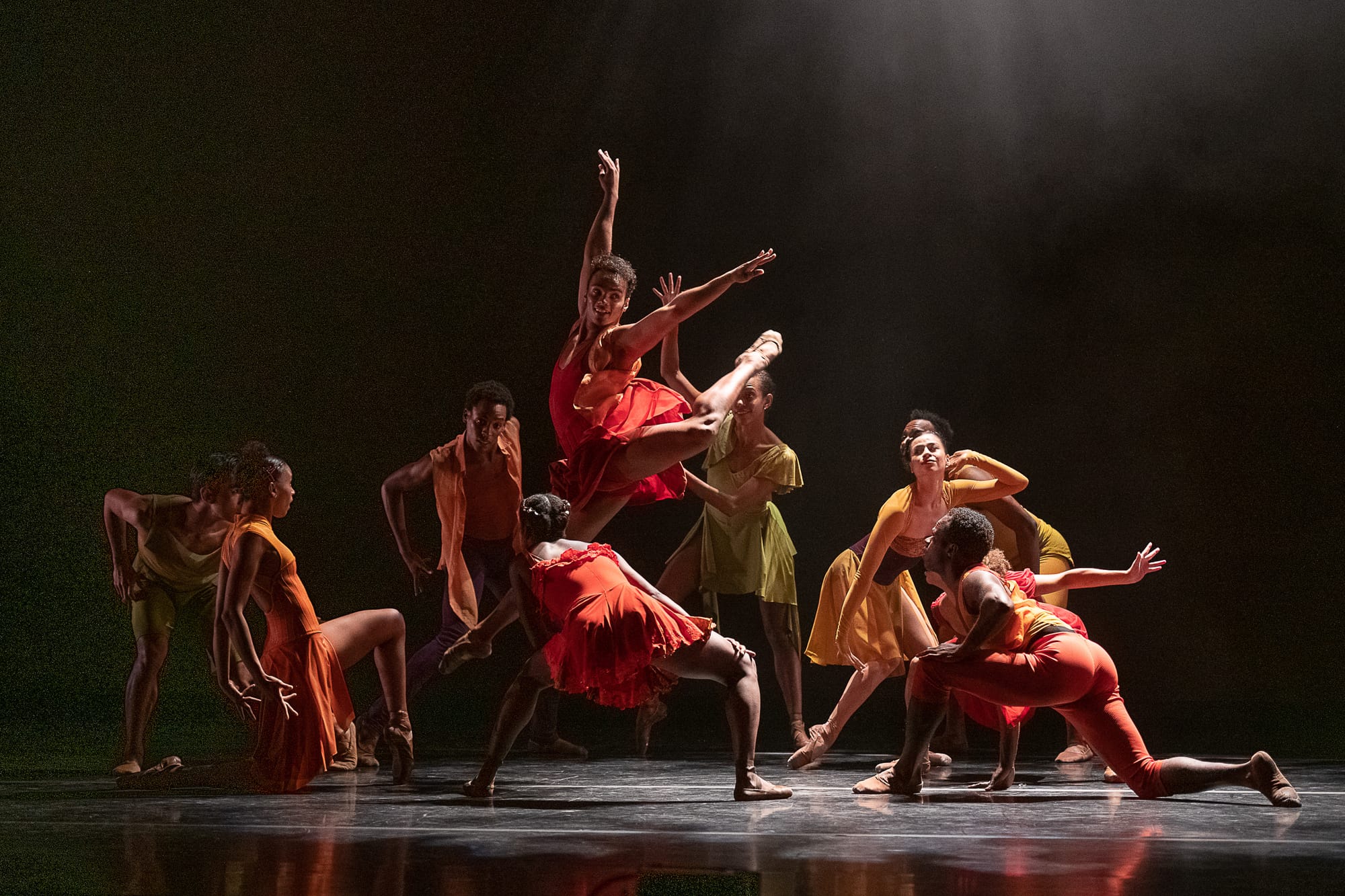Dance Theater of Harlem at Jacob’s Pillow

“Harlem on My Mind,” “This Bitter Earth,” “Valse Fantaisie,” “Balamouk”
Dance Theater of Harlem
Jacob’s Pillow
Becket, MA
July 13, 2019
It is hard to believe it was fifty years ago that Arthur Mitchell and Karel Shook founded the ground- breaking Dance Theater of Harlem. Since then the company has had its ups and downs, including an eight-year hiatus from 2004 to 2012. But under the direction of Virginia Johnson, one of its first ballerinas, the company has regained its footing and is looking very good. Mitchell, who died last September, would have had every reason to be proud.
The company’s appearance at Jacob’s Pillow this past week stressed its breadth in works by choreographers that ranged from George Balanchine and Christopher Wheeldon to Darrell Grand Moultrie and Annabelle Lopez Ochoa. On the classical end of the spectrum was Balanchine’s “Valse Fantasie,” created in 1953 for New York City Ballet. This is an extended pas de deux, to music of Glinka, for a couple accompanied by four women. It is, as the title indicates, a waltz in a romantic vein. The dancing is full of bounding leaps on the first beat, using the next two to catch up. It calls for high energy, sound technique, and a touch of bravado. Crystal Serrano and DylanSantos danced it with all the lightness and joyousness it demands.
“This Bitter Earth” is a duet that was originally part of a larger work Wheeldon made for Fang-Yi Sheu & Artists, although it was danced by New York City Ballet principals Wendy Whelan and Tyler Angle and is now in the NYCB repertory. The duet is set to Dinah Washington’s famous rendition of the song, against a background of Max Richter’s minimalist score, “On the Nature of Daylight.” Surprisingly, the unusual combination of music works well. This is the kind of dance that not only takes technical skill to maintain a smooth surface amidst tricky lifts and transitions, but also sophisticated artistry to convey the hard-won lessons of love the song speaks of. Yinet Fernandez and Anthon Santos are handsome dancers, but they are perhaps too inexperienced to be able to express the kind of emotions called for. They performed the duet with studied seriousness but I suspect it takes more mature artists to give it its full force.

A far better fit for DTH’s youthful dancers was Annabelle Lopez Ochoa’s “Balamouk,” which was commissioned by New York City Center for last year’s Fall for Dance Festival and then enlarged for Jacob’s Pillow. Ochoa chose a disparate assortment of music by Les Yeux Noirs, singer/composer Lisa Gerrard, and Rene Aubry. The piece began with the twelve dancers standing in a circle while an infectious drum beat pulsed around them. It was the kind of seductive sound that makes you throw caution to the wind and leap up to join the snaking line of dancers at a Jewish wedding. The drumbeat segued into the klezmer/gypsy inspired music for which Les Yeux Noirs is known, and which the dancers could not seem to resist. Soon they were gesturing upward and outward, or moving out from the circle and back, as if they couldn’t be contained. From there, arms gestured ecstatically, feet stamped and bodies were propelled in exhilarating movement. The second section of the piece shifted gears to something far more mysterious, with a goddess like dancer, Ingrid Silva, being raised above the heads of five men and then pointing in various directions as if commanding attention to something out of sight beyond the stage. At one point fog was released to increase the sense of mystery, accompanied by Gerrard’s haunting song. The final section consisted of an exuberant group finale that wound down to the dancers once again in the tight circle where they began. Ochoa’s work suits DTH perfectly, and the dancers looked as if they reveled in every instant of it.
The performance started with Moultrie’s “Harlem on My Mind,” which was the sort of work that used to be called a curtain raiser or crowd pleaser. It was set to a selection of jazz and pop tunes, ranging from “My Funny Valentine” to “Ain’t Misbehaven.” The idea was probably to draw on urban African American roots while gesturing to the place where DTH was born. But all it really did was repeat clichés of cool dudes and flirtatious women. It reminded me of early Alvin Ailey dances, and the Ailey company, steeped in a variety of dance forms, might still be able to get away with it. But these are young ballet dancers and they did not look comfortable. The movement, and especially the expression, appeared forced. Fortunately, there were other elements of the program that allowed the DTH dancers to shine, and altogether the company acquitted itself admirably.
copyright© 2019 by Gay Morris



